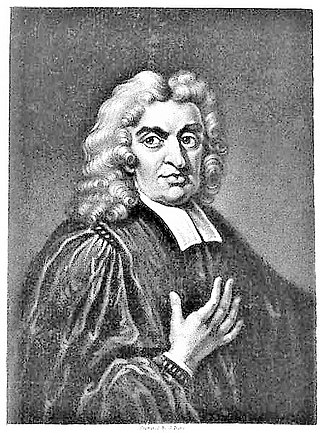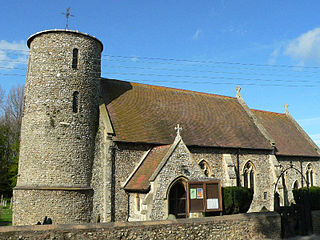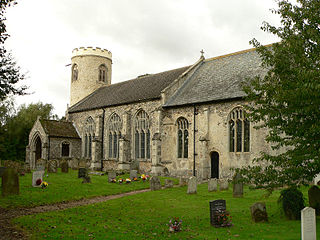| Hundred | Area | Parishes |
|---|
| Blofield | 19,666 acres (79.59 km2) | Blofield, Braydeston, Brundall, Buckenham, Cantley, Freethorpe, Great Plumstead, Hassingham, Limpenhoe, Lingwood, Little Plumstead, North Burlingham, Postwick, South Burlingham, Southwood, Strumpshaw, Thorpe, Witton |
| Brothercross | 19,169 acres (77.57 km2) | Burnham Deepdale, Burnham Sutton and Burnham Ulph, Burnham Norton, Burnham Overy, Burnham Thorpe, Burnham Westgate, North Creake, South Creake, Waterden |
| Clackclose | 84,333 acres (341.28 km2) | Barton Bendish, Beachamwell, Bexwell, Boughton, Crimplesham, Denver, Downham Market, Fincham, Fordham, Hilgay, Holme next Runcton, Marham, Outwell, Roxham, Ryston, Shingham, Shouldham, Shouldham Thorpe, South Runcton, Southery, Stoke Ferry, Stow Bardolph, Stradsett, Thorpland, Tottenhill, Upwell, Watlington, Welney, Wereham, West Dereham, Wimbotsham, Wormegay, Wretton |
| Clavering | 29,844 acres (120.77 km2) | Aldeby, Bergh Apton, Brooke, Burgh St. Peter, Ellingham, Geldeston, Gillingham All Saints and St. Mary, Haddiscoe, Hales, Heckingham, Howe, Kirby Cane, Norton Subcourse, Raveningham, Stockton, Thorpe, Thurlton, Toft Monks, Wheatacre |
| Depwade | 30,491 acres (123.39 km2) | Ashwellthorpe, Aslacton, Bunwell, Carleton Rode, Forncett St Mary, Forncett St Peter, Fritton, Fundenhall, Great Moulton, Hapton, Hardwick, Hempnall, Morningthorpe, Shelton, Stratton St. Mary, Stratton St. Michael, Tacolneston, Tasburgh, Tharston, Tibenham, Wacton |
| Diss | 23,628 acres (95.62 km2) | Bressingham, Burston, Dickleburgh, Diss, Fersfield, Frenze, Gissing, Roydon, Scole, Shelfanger, Shimpling, Thelveton, Thorpe Parva, Tivetshall St. Margaret, Tivetshall St. Mary, Winfarthing |
| Earsham | 24,564 acres (99.41 km2) | Alburgh, Billingford, Brockdish, Denton, Earsham, Mendham, Needham, Pulham Market, Pulham St Mary, Redenhall with Harleston, Rushall, Starston, Thorpe Abbotts, Wortwell |
| East Flegg | 11,556 acres (46.77 km2) | Caister, Filby, Great Yarmouth, Mautby, Ormesby St. Margaret, Ormesby St. Michael, Runham, Scratby, Stokesby with Herringby, Thrigby |
| Eynesford | 46,637 acres (188.73 km2) | Alderford, Bawdeswell, Billingford, Bintree, Brandiston, Bylaugh, Elsing, Foulsham, Foxley, Great Witchingham, Guestwick, Guist, Hackford, Haveringland, Hindolveston, Little Witchingham, Lyng, Morton on the Hill, Reepham, Ringland, Salle, Sparham, Swannington, Themelthorpe, Thurning, Twyford, Weston Longville, Whitwell, Wood Dalling, Wood Norton |
| Forehoe | 39,042 acres (158.00 km2) | Barford, Barnham Broom, Bawburgh, Bowthorpe, Brandon Parva, Carleton Forehoe, Colton, Costessey, Coston, Crownthorpe, Deopham, Easton, Hackford, Hingham, Honingham, Kimberley, Marlingford, Morley St. Botolph, Morley St. Peter, Runhall, Welborne, Wicklewood, Wramplingham, Wymondham |
| Freebridge-Lynn | 68,366 acres (276.67 km2) | Anmer, Ashwicken, Babingley, Bawsey, Castle Acre, Castle Rising, Congham, Dersingham, East Walton, East Winch, Flitcham, Gayton, Gayton Thorpe, Gaywood, Great Massingham, Grimstone, Harpley, Hillington, King's Lynn, Leziate, Little Massingham, Middleton, Mintlyn, North Runcton, North Wootton, Pentney, Roydon, Sandringham, Setchey, South Wootton, West Acre, West Bilney, West Newton, West Winch, Wolferton |
| Freebridge-Marshland | 53,908 acres (218.16 km2) | Clenchwarton, Emneth, Marshland St James, North Lynn, St Peter West Lynn, Terrington St. Clement, Terrington St. John, Tilney All Saints, Tilney St. Lawrence, Tilney cum Islington, Walpole St. Andrew, Walpole St. Peter, Walsoken, West Walton, Wiggenhall St. Germans, Wiggenhall St. Mary Magdalen, Wiggenhall St. Mary the Virgin, Wiggenhall St. Peter |
| Gallow | 42,480 acres (171.9 km2) | Alethorpe, Bagthorpe, Barmer, Broomsthorpe, Dunton, East Barsham, East Raynham, East Rudham, Fakenham, Fulmodeston, Great Ryburgh, Helhoughton, Hempton, Kettlestone, Little Ryburgh, Little Snoring, New Houghton, North Barsham, Pensthorpe, Pudding Norton, Sculthorpe, Shereford, South Raynham, Stibbard, Syderstone, Tatterford, Tattersett, Testerton, Toftrees, West Barsham, West Raynham, West Rudham |
| Grimshoe | 57,309 acres (231.92 km2) | Buckenham Tofts, Colveston, Cranwich, Croxton, Feltwell, Hockwold cum Wilton, Igborough, Lynford, Methwold, Mundford, Northwold, Santon, Stanford, Sturston, Weeting All Saints, West Tofts |
| Guiltcross | 26,828 acres (108.57 km2) | Banham, Blo' Norton, East Harling, Garboldisham, Gasthorpe, Kenninghall, North Lopham, Quidenham, Riddlesworth, Rushford, Snarehill, South Lopham, West Harling |
| Happing | 26,780 acres (108.4 km2) | Brumstead, Catfield, East Ruston, Happisburgh, Hempstead, Hickling, Horsey, Ingham, Lessingham, Ludham, Sea Palling, Potter Heigham, Stalham, Sutton, Walcott, Waxham |
| Henstead | 19,086 acres (77.24 km2) | Arminghall, Bixley, Bramerton, Caistor St Edmund, Framingham Earl, Framingham Pigot, Holverstone, Kirby Bedon, Poringland, Rockland St. Mary, Saxlingham Nethergate, Saxlingham Thorpe, Shottesham All Saints, Shotesham, Stoke Holy Cross, Surlingham, Trowse, Whitlingham, Yelverton |
| Holt | 35,294 acres (142.83 km2) | Bale, Bayfield, Blakeney, Bodham, Briningham, Brinton, Briston, Cley-next-the-Sea, Edgefield, Glandford, Gunthorpe, Hempstead, Holt, Hunworth, Kelling, Langham, Letheringsett, Melton Constable, Morston, Salthouse, Saxlingham, Sharrington, Stody, Swanton Novers, Thornage, Weybourne, Wiveton |
| Humbleyard | 21,355 acres (86.42 km2) | Bracon Ash, Colney, Cringleford, Dunston, East Carlton, Flordon, Great Melton, Hethel, Hethersett, Intwood, Keswick, Ketteringham, Little Melton, Markshall, Mulbarton, Newton Flotman, Swainsthorpe, Swardeston, Wreningham |
| Launditch | 56,006 acres (226.65 km2) | Beeston All Saints, Beetley, Brisley, Colkirk, Dillington, East Bilney, East Lexham, Gateley, Great Dunham, Great Fransham, Gressenhall, Hoe, Horningtoft, Kempstone, Litcham, Little Bittering, Little Dunham, Little Fransham, Longham, Mileham, North Elmham, Oxwick, Pattesley, Rougham, Scarning, Stanfield, Swanton Morley, Tittleshall, Weasenham All Saints, Weasenham St. Peter, Wellingham, Wendling, West Lexham, Whissonsett, Worthing |
| Loddon | 27,838 acres (112.66 km2) | Alpington, Ashby, Bedingham, Broome, Carleton St. Peter, Chedgrave, Claxton, Ditchingham, Hardley, Hedenham, Hellington, Kirstead, Langley, Loddon, Mundham, Seething, Sisland, Thurton, Thwaite St. Mary, Topcroft, Woodton |
| Mitford | 32,133 acres (130.04 km2) | Cranworth, East Dereham, East Tuddenham, Garvestone, Hardingham, Hockering, Letton, Mattishall, Mattishall Burgh, North Tuddenham, Reymerston, Shipdham, Southburgh, Thuxton, Westfield, Whinbergh, Wood Rising, Yaxham |
| North Erpingham | 33,393 acres (135.14 km2) | Aldborough, Antingham, Aylmerton, Barningham Town, Barningham Norwood, Beeston Regis, Bessingham, Cromer, East Beckham, Felbrigg, Gimingham, Gresham, Gunton, Hanworth, Knapton, Matlask, Metton, Mundesley, North Repps, Overstrand, Plumstead, Roughton, Runton, Sheringham, Sidestrand, South Repps, Suffield, Sustead, Thorpe Market, Thurgarton, Trimingham, Trunch |
| North Greenhoe | 30,483 acres (123.36 km2) | Barney, Binham, Cockthorpe, Egmere, Field Dalling, Great Snoring, Great Walsingham, Hindringham, Holkham, Houghton-in-Dale, Little Walsingham, Quarles, Stiffkey, Thursford, Warham All Saints, Warham St. Mary, Wells-next-the-Sea, Wighton |
| Shropham | 44,944 acres (181.88 km2) | Attleborough, Besthorpe, Brettenham, Bridgham, East Wretham, Eccles, Great Ellingham, Hargham, Hockham, Illington, Kilverstone, Larling, New Buckenham, Old Buckenham, Rockland All Saints, Rockland St. Andrew, Roudham, Shropham, Snetterton, West Wretham, Wilby |
| Smithdon | 43,786 acres (177.20 km2) | Barwick, Bircham Newton, Bircham Tofts, Brancaster, Choseley, Docking, Fring, Great Bircham, Great Ringstead, Heacham, Holme-next-the-Sea, Hunstanton, Ingoldisthorpe, Sedgeford, Shernborne, Snettisham, Stanhoe, Thornham, Titchwell |
| South Erpingham | 48,058 acres (194.48 km2) | Alby with Thwaite, Aylsham, Baconsthorpe, Banningham, Barningham Parva, Belaugh, Blickling, Booton, Brampton, Burgh, Buxton, Calthorpe, Cawston, Colby, Coltishall, Corpusty, Erpingham, Great Hautboys, Hevingham, Heydon, Ingworth, Irmingland, Itteringham, Lammas with Little Hautboys, Mannington, Marsham, Oulton, Oxnead, Saxthorpe, Scottow, Skeyton, Stratton Strawless, Swanton Abbott, Tuttington, West Beckham, Wickmere, Wolterton |
| South Greenhoe | 57,921 acres (234.40 km2) | Bodney, Caldecote, Cockley Cley, Didlington, East Bradenham, Foulden, Gooderstone, Great Cressingham, Hilborough, Holme Hale, Houghton-on-the-Hill, Langford, Little Cressingham, Narborough, Narford, Necton, Newton, North Pickenham, Oxborough, South Pickenham, Southacre, Sporle with Palgrave, Swaffham, West Bradenham |
| Taverham | 30,600 acres (124 km2) | Attlebridge, Beeston St. Andrew, Catton, Crostwick, Drayton, Felthorpe, Frettenham, Hainford, Hellesdon, Horsford, Horsham St. Faith, Horstead with Stanninghall, Newton St. Faith, Rackheath, Salhouse, Spixworth, Sprowston, Taverham, Wroxham |
| Tunstead | 34,696 acres (140.41 km2) | Ashmanhaugh, Bacton, Barton Turf, Beeston St. Lawrence, Bradfield, Crostwight, Dilham, Edingthorpe, Felmingham, Honing, Horning, Hoveton, Irstead, Neatishead, North Walsham, Paston, Ridlington, Sco Ruston, Sloley, Smallburgh, Swafield, Tunstead, Westwick, Witton, Worstead |
| Walsham | 24,058 acres (97.36 km2) | Acle, Beighton, Fishley, Halvergate, Hemblington, Moulton, Ranworth-with-Panxworth, Reedham, South Walsham, Tunstall, Upton, Wickhampton, Woodbastwick |
| Wayland | 31,076 acres (125.76 km2) | Ashill, Breckles, Carbrooke, Caston, Griston, Little Ellingham, Merton, Ovington, Rockland St. Peter, Saham Toney, Scoulton, Stow Bedon, Thompson, Threxton, Tottington, Watton |
| West Flegg | 13,479 acres (54.55 km2) | Ashby, Billockby, Burgh St. Margaret, Burgh St. Mary, Clippesby, East Somerton, Hemsby, Martham, Oby, Repps with Bastwick, Rollesby, Thurne, West Somerton, Winterton-on-Sea |
















